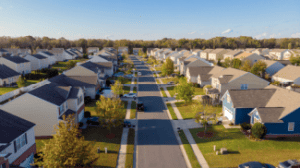Why the Single-Family Rental Market Remains an Unstoppable Force
As we approach the second half of the year, much has transpired across the economy, the real estate sector and the single-family rental (SFR) arena. We’ve witnessed the negative impacts of record inflation, slowed investment activity accompanying the Federal Reserve’s continued interest rate hikes and the second and third largest bank failures in U.S. history.
With real estate lending now hampered across all asset classes, rippling effects are being witnessed across SFRs as well. Although make no mistake — the sector will emerge stronger.
The single-family, build-to-rent (BTR) model is only about a decade old and was spawned following a global financial crisis. The few that introduced the concept of SFR communities purpose-built from the ground up will attest that the first several years in the business were challenging.
BTR got off to a choppy start

developments, as well as multitudes of players joining the sector looking to capitalize on the opportunity. Unfortunately, many of these participants compromised on some of the key tenets of real estate.
Undoubtedly lucrative for many, these past few years have been anything but normal. Spurred by COVID-19, mass population migrations occurred. Households left major coastal markets like Los Angeles and New York City for markets in Texas and Florida where they could find more space, lower rents, better schools and an improved quality of life.
With extremely cheap debt and ongoing economic stimuli being pumped into the economy, both the for-sale and for-rent sectors surged. Like apartments, lease rates for rental homes in SFR communities skyrocketed. While many in the SFR industry benefitted, none of these dynamics were sustainable or, arguably, healthy.
The BTR development activity has accelerated at a frenzied pace in the past few years, resulting in some undesirable effects. These include homes built to mediocre quality, communities placed in poor locations and lackluster customer service on the property management side.
Additionally, daily inconsistent use of industry vernacular has occurred among countless industry participants who have loose definitions of what constitutes BTR and what doesn’t.
As we witness the scales tip, the likelihood that many of these SFR participants and assets will become challenged in attracting quality renters grows stronger by the day. The long-term return on investment (ROI) potential of many SFR developments will also diminish. There is great potential for many poorly planned assets to become eyesores, negatively impacting their surrounding communities, towns and cities. Some may even be at risk of one day becoming blighted. Time will tell.
Tough times separate wheat from chaff
There’s no doubt that many who entered the sector to cash in on the hype will ultimately be forced out. Constrained capital markets will play a key role. When evaluating deals today, both equity and debt sources are substantially more discerning than they’ve been in recent years. Many of these sources have even dried up. Banks specifically are heavily impacted by heightened interest rates and, as a result, have dramatically slowed their lending. For those able to secure financing, it’s coming from the sources that remain at significantly higher costs.
When capital costs are higher, rents must also increase. Yet current data indicate that rent growth has slowed, or even declined, in many markets. Leasing in general has become much more challenging. Demand for rental homes no longer persists year-round. For the first time in years, seasonality is back, and leasing seasons have re-emerged. Rental demand from November 2022 through February 2023 proved markedly quiet and only later picked up and persevered during the spring months. This shift toward seasonal demand is likely here to stay.
Need a Lease Agreement?
Access 150+ state-specific legal landlord forms, including a lease.
These SFR headwinds — heightened interest rates, banks in crisis, limited available capital, rent declines, leasing seasonality — all point to this being a business in which it’s becoming much harder to achieve profits. Despite these challenges, it’s not all bad news for SFRs. In fact, the long-term prospects are extremely positive.
First, many of these headwinds are cyclical in nature. Interest rates are expected to level off at some point, and any distress in the banking sector will eventually work itself out. When these two events occur, capital will become more readily available from additional sources and at improved rates to boot.
Moving forward, however, capital providers will also likely require partners to demonstrate successful track records in owning and operating SFR and be working toward legitimate business models that return to known real estate fundamentals. Location, cost and service are three factors that will improve the chances that new communities get built in the future.
Less savvy players will also be forced to move on, and the result will be a more sophisticated BTR/SFR sector. Another hope is that this will lead to the consistent, and accurate, use of terminology to describe SFR and BTR product.
Ultimately, well located, highly amenitized and properly managed single-family rental communities offering exceptional service and lifestyle aren’t just in vogue today. They are a core, institutional-grade asset class within real estate for the long term, and that is something to be excited about.
Source: REBusiness Online















 Accessibility
Accessibility